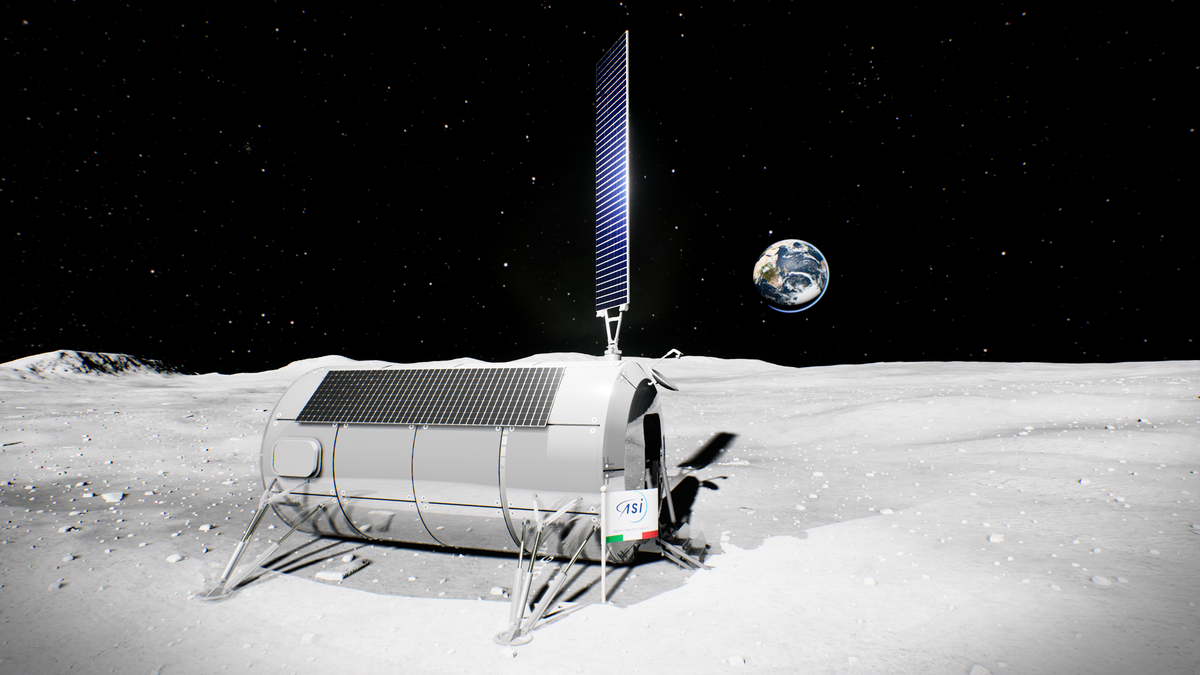
Thales Alenia Space and the Italian Space Agency (ASI) are embarking on a pioneering venture to construct the first permanent human outpost on the Moon, a critical component of NASA’s Artemis program.
NASA’s Gemini and Apollo missions, and the Cold War space race in general, understandably expanded the horizons of science fiction writers, who began to portray futures in which the Moon wasn’t just a celestial body to visit but a place to inhabit. This vision, as vividly portrayed in various TV shows and movies, showcased lunar bases as standard fixtures of the future. The classic 1968 film 2001: A Space Odyssey serves as a prime example, depicting the Moon as the site of an advanced research facility, illustrating a future where high-tech living extends beyond Earth. Likewise, the 1975 British series, Space: 1999, depicted a fully operational Moon base—Moonbase Alpha—as a hub of scientific advancement and space exploration.
Yet, as we find ourselves in the year 2023, this vision remains unfulfilled (a scenario that would have seemed unimaginable in the early 1970s). Despite many technological advancements and renewed interest in lunar exploration, particularly with NASA’s Artemis program, humanity has yet to establish a permanent base on the Moon. This is now set to change, as a project to build the first permanent lunar outpost is finally taking shape.
On November 23, Thales Alenia Space announced a contract with ASI to develop the Multi-Purpose Habitat (MPH)—a crucial component of NASA’s Artemis program that aims to establish a sustainable long-term human presence on the Moon. This project could conceivably result in the first permanent Moon base. No costs or timelines for deployment were provided, but the module likely won’t appear on the lunar surface before the 2030s.
“MPH will mark a historic milestone as the first Italian habitation module to operate on the lunar surface,” Franco Fenoglio, head of human planetary exploration and robotics programs at Thales Alenia Space, said in a statement. “This is a matter of great pride for our company, which has the unique technical and organizational skills to overcome challenges of this kind.”
The collaboration between NASA and ASI on this endeavor dates back to 2020 with a joint statement of intent in support of the Artemis program. This early agreement focused on developing crew habitation capabilities and related technologies for short-term lunar stays. In June 2022, ASI signed an agreement with NASA to conduct a preliminary design of the module. The project met a key milestone in October, successfully passing NASA’s Element Initiation Review. This progress prompted ASI to assign Thales Alenia Space the responsibility of further developing this humble lunar base.
Thales Alenia Space released an image of the MPH, revealing a cylindrical design, telescopic legs, and solar arrays. Although details are sparse, and assuming the artistic rendering is accurate, the pressurized module looks to be no longer than roughly 33 feet (10 meters) in length. It’ll be cozy for the Artemis astronauts, no doubt. From this base, astronauts will embark on missions to conduct experimental science in the lunar environment, deploy and test new technologies, and investigate potential exploration risks. Excitingly, it could lay the groundwork for NASA’s proposed lunar base camp, which calls for foundation surface habitats capable of housing as many as four astronauts at a time.
The next significant step for the project is the Mission Concept Review, scheduled for the first quarter of 2024. This review is essential for progressing to the subsequent phases and developing the critical technologies needed for long lunar stays. These technologies include advanced life-support systems and solutions to mitigate the pervasive lunar dust and the extreme temperatures experienced near the lunar south pole. Thales Alenia Space’s responsibility extends to forming an industrial consortium to move the project into its implementation phase. Interestingly, Thales Alenia Space is also working to develop three pressurized modules meant for Lunar Gateway, a planned space station that will orbit the Moon—another sci-fi-like project that’s long overdue.
This project to build a foundational multi-functional lunar habitat is a small but crucial step, edging us closer to realizing the lunar bases once envisioned only in science fiction. It’ll be a tiny lunar outpost, but we gotta start somewhere.
Want to know more about humanity’s next giant leap in space? Check out our full coverage of NASA’s Artemis Moon program, the new Space Launch System (SLS) rocket and Orion spacecraft, the recently concluded Artemis 1 mission around the Moon, the four-person Artemis 2 crew, NASA and Axiom’s Artemis Moon suit, and the upcoming lunar Gateway space station. And for more spaceflight in your life, follow us on X (formerly Twitter) and bookmark Gizmodo’s dedicated Spaceflight page.






